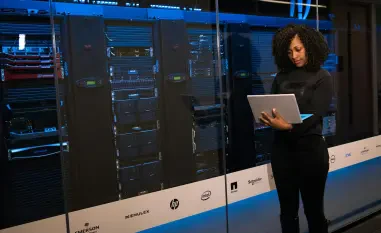The Endpoint Security Landscape: A Critical Industry Overview
In an era where digital transformation shapes every facet of business operations, endpoint security stands as a cornerstone in safeguarding organizational assets against an ever-growing array of cyber threats. With billions of devices connected globally, endpoints—ranging from laptops to IoT devices—serve as prime targets for malicious actors seeking to exploit vulnerabilities. The importance of robust protection cannot be overstated, as a single breach can result in devastating financial losses and reputational damage, underscoring the critical role this industry plays in maintaining digital trust.
The endpoint security market is broadly segmented into traditional antivirus solutions, advanced Endpoint Detection and Response (EDR) platforms, and emerging technologies that push beyond conventional defenses. Major players like CrowdStrike, Palo Alto Networks, and Microsoft dominate the space, leveraging artificial intelligence and machine learning to enhance threat detection. Meanwhile, hardware-level solutions are gaining traction, offering deeper visibility into system activities, reflecting a broader trend of integrating cutting-edge technology to stay ahead of sophisticated adversaries.
Beyond technology, the significance of cybersecurity in a digitally driven world is amplified by the increasing reliance on remote work and cloud environments. These shifts have expanded the attack surface, making endpoint protection a non-negotiable priority for enterprises. As threats evolve, the industry faces pressure to innovate continuously, balancing user experience with stringent security measures, while adapting to a landscape where regulatory compliance and consumer expectations further complicate the equation.
Prelude Security’s $16M Funding: A Catalyst for Innovation
Strategic Goals and Technological Focus
Prelude Security, an emerging force in endpoint protection, has recently secured million in a funding round led by Brightmind Partners, with contributions from existing backers such as Sequoia Capital and Insight Partners. This investment pushes the company’s total funding to a substantial million. The capital injection marks a pivotal moment for Prelude, signaling strong investor confidence in its vision to transform how endpoints are secured in an increasingly hostile digital environment.
The primary objective of this funding is to accelerate the development of Prelude’s runtime memory protection technology, a novel approach designed to detect and neutralize threats at the point of execution. By focusing on enhancing its endpoint security offerings, the company aims to address critical gaps in current defenses, particularly against in-memory attacks that evade traditional detection methods. This strategic focus positions Prelude to deliver solutions that are not just reactive but proactively safeguard systems at a fundamental level.
Market Positioning and Industry Impact
Within the competitive endpoint security market, Prelude stands out by carving a niche with its execution-focused technology, setting itself apart from conventional file-based and behavior-based tools. The potential for growth is significant, as organizations increasingly seek innovative solutions to combat advanced threats. With a clear technological edge, Prelude is well-placed to capture market share, especially among enterprises prioritizing real-time threat mitigation over legacy systems.
Looking ahead, this $16 million infusion could reshape market dynamics by setting new standards for innovation in endpoint protection. Competitors may be compelled to adapt or risk obsolescence, as Prelude’s advancements challenge the status quo. If successful, the company’s approach might inspire a wave of similar technologies, driving the industry toward more dynamic and resilient security frameworks over the coming years.
Challenges in Combating Modern Cyber Threats
The cybersecurity landscape is witnessing a surge in the sophistication of threats, with in-memory attacks now constituting roughly 75% of advanced cyberattacks. These stealthy incursions, which operate without leaving traces on disk, pose a formidable challenge to traditional defenses. As attackers refine their methods, organizations struggle to keep pace, often finding themselves vulnerable to breaches that exploit undetected memory-based exploits.
Traditional detection mechanisms, reliant on file signatures and behavioral patterns, fall short against modern tactics like process injection and “living-off-the-land” strategies, where attackers use legitimate system tools to execute malicious actions. Such limitations highlight a pressing need for solutions that can identify threats in real time, without depending on outdated models. The gap in protection leaves critical systems exposed, amplifying the risk of ransomware and other high-impact attacks.
Prelude’s execution-focused approach offers a promising avenue to counter these challenges by targeting the critical moment of code execution, a necessary step for any attack. This method, supported by hardware-level telemetry, enables faster response times and more effective neutralization of threats. As the industry grapples with evolving dangers, adaptive, real-time defenses like these are becoming essential to ensure comprehensive protection across diverse environments.
The Role of Technology and Regulation in Endpoint Security
Technological advancements are profoundly shaping the future of endpoint security, with innovations like hardware-level telemetry providing unprecedented insight into system operations. Such capabilities allow for granular monitoring of code execution, enhancing the ability to detect malicious activities that evade software-based solutions. Alignment with initiatives like Microsoft’s Windows Resiliency Initiative further demonstrates how technology partnerships can bolster security at a systemic level, fostering greater resilience.
Regulatory frameworks also play a pivotal role in defining the contours of cybersecurity practices. Compliance with standards such as GDPR, CCPA, and industry-specific mandates compels organizations to adopt robust endpoint protection measures. These regulations not only drive demand for advanced solutions but also impose constraints on how technologies are developed and deployed, ensuring that innovation aligns with legal and ethical considerations.
The interplay between evolving regulations and security measures significantly impacts the rollout of cutting-edge solutions like Prelude’s. As mandates tighten, companies must navigate a complex landscape of compliance while striving to maintain agility in threat response. This dual pressure underscores the need for technologies that are both innovative and adaptable, capable of meeting stringent requirements without compromising on effectiveness.
The Future of Endpoint Security: Trends and Predictions
The trajectory of endpoint security is veering toward dynamic, execution-focused measures as a response to the limitations of legacy systems in addressing stealthy cyberattacks. This shift reflects a broader recognition that static defenses are no longer sufficient in an environment where threats are increasingly AI-driven and adaptive. Solutions that prioritize real-time intervention are poised to become the new benchmark for protection.
Emerging trends also point to the growing complexity of threats, with AI-enabled adversaries exploiting vulnerabilities at an unprecedented scale. Concurrently, hardware-based solutions are gaining prominence, offering a deeper layer of defense that software alone cannot provide. These developments suggest a potential disruption in the market, where integrated, multi-layered approaches could redefine how endpoints are secured over the next few years.
Several factors will shape this future, including rapid technological innovation, the escalation of global cyber threats, and changing consumer expectations for seamless yet robust protection. As organizations demand solutions that balance usability with security, providers must innovate continuously. The coming years, particularly from now to 2027, are likely to witness significant advancements, with companies like Prelude potentially leading the charge in setting new industry standards.
Conclusion: Prelude’s Potential to Lead the Next Wave of Cybersecurity
Reflecting on the insights gathered, Prelude Security’s journey with its runtime memory protection technology marks a significant stride in addressing critical vulnerabilities that plague endpoint defenses. Its focus on detecting threats at the point of execution stands as a testament to the power of innovative thinking in tackling in-memory attacks. Industry leaders view this as a defining moment, positioning Prelude at the forefront of the third wave of endpoint security.
For stakeholders, the path forward involves strategic investments in technologies that prioritize real-time, adaptive defenses over outdated models. Collaborations between industry players and regulatory bodies are seen as crucial to harmonizing innovation with compliance needs. By fostering such partnerships, the sector can build a more resilient framework against future threats.
Looking beyond immediate gains, the broader implication of Prelude’s advancements suggests a transformative potential for cybersecurity as a whole. Emphasizing research into hardware-level solutions and AI integration offers a blueprint for preempting sophisticated attacks. This focus on forward-thinking strategies ensures that the industry remains agile, ready to adapt to whatever challenges emerge on the horizon.













